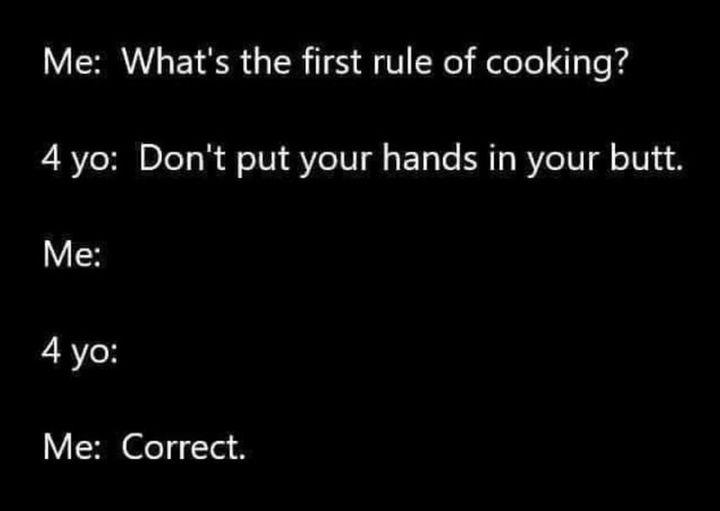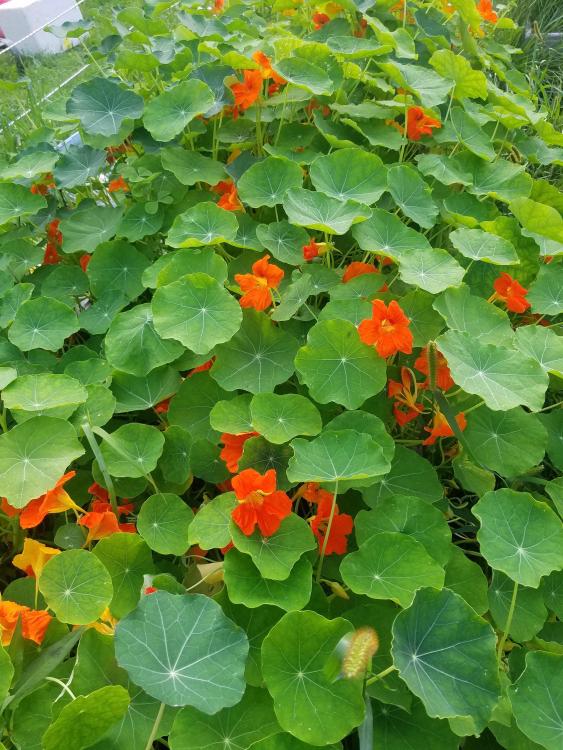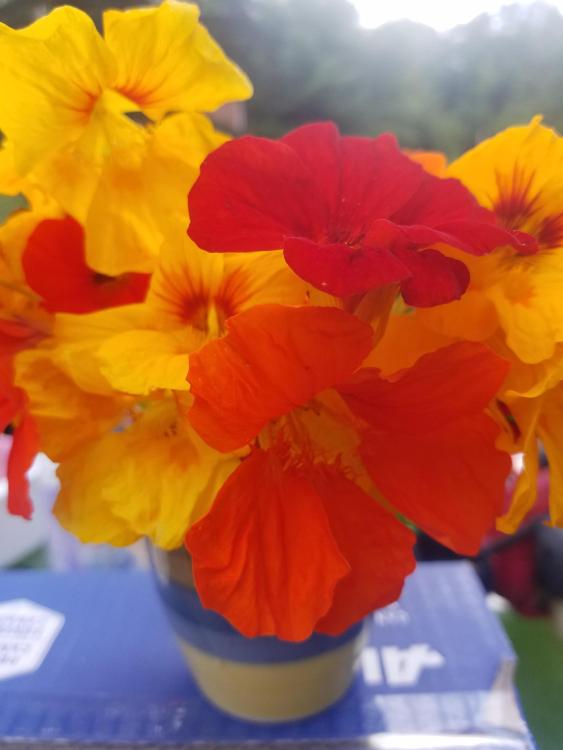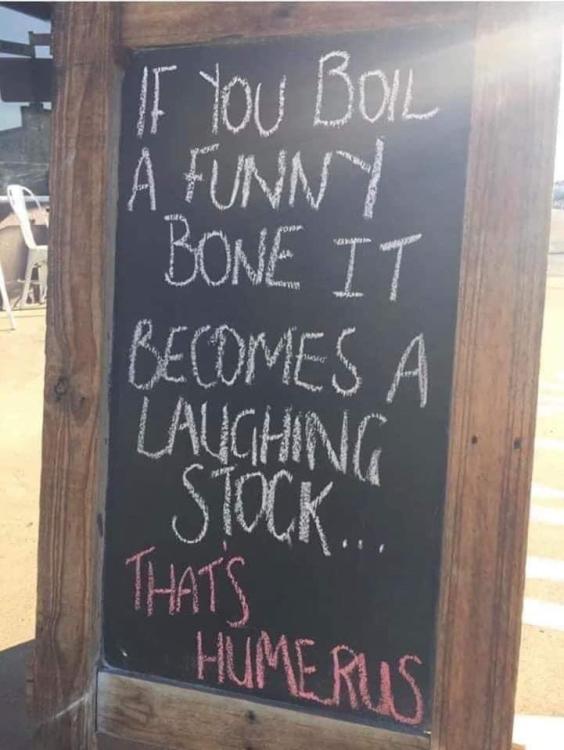-
Posts
6,332 -
Joined
-
Last visited
Content Type
Profiles
Forums
Store
Help Articles
Everything posted by chromedome
-
The final level of (over-)doneness betrays this image's origin on a Star Wars fan page.
-
I'll often throw big handfuls of chard or lacinato kale (or turnip greens, or whatever mixture I've got) into a pan with a sauteed onion, and a generous quantity of garlic. It's a really simple side dish, but you can tweak it and tart it up with things like a squeeze of anchovy paste and/or lemon, or toasted breadcrumbs, or the chopped and toasted nut of your choice. GF likes hers with a substantial glop of heavy cream and some cheese grated over top, but that's just how she rolls.
-
A friend gifted us with a large quantity of those from his own trees. We canned some whole, and cooked down most of the remainder to make jelly. I ran out of time before leaving for NS (I'm down visiting my mom) so we just poured the juice into Mason jars, refrigerated the ones that didn't self-seal, and the rest can wait until I get home. I suppose this could/should have gone under "unexpected food gifts"...
-
I've tasted it, it's definitely still got some zing and some apple-y goodness.
-
We're doing much the same right now (20 lbs of crabapples from a friend) and granddaughter has requested that we turn the pulp into fruit leather for her lunchbox.
-
They're voracious little bastards, aren't they? They got into my lacinato kale while I was away in Nova Scotia a couple of months ago, so I had to squish a bunch of them and then wash their eggs off of the plants. I've taken a few measures to deter them. One is giving my grandkids carte blanche to "collect" any white butterfly they see in my garden, and start a terrarium for it. I've had to clean up several sad little forgotten Mason jars full of twigs and leaves and a dead moth, but that's a small price to pay. The two usual companion-planting suggestions for the cabbage moth are alliums and marigolds, and I've used them both. I didn't set up in proper scientific fashion, with an unprotected control plot of the same cultivars, but anecdotally I can tell you that I've had fewer issues with the cabbage worms in those beds. This year, for example, I had broccoli interplanted with marigolds in the bed right next to the one containing the kale, and the broccoli was unscathed. Ultimately I hope to have mesh covers over my brassicas, but that didn't happen this year for various reasons. Maybe next year.
-
The ever-expanding energy drinks recall now includes several Monster brand products. https://recalls-rappels.canada.ca/en/alert-recall/various-brands-caffeinated-energy-drinks-may-be-unsafe-due-caffeine-content-and?utm_source=gc-notify&utm_medium=email&utm_content=en&utm_campaign=hc-sc-rsa-22-23
-
LOL It's all about the marketing...
-
That'd be a heck of a road trip...
-
There are some cultivars, like the aptly named Permagreen and Staysgreen, that retain their color when they ripen. That's less common, though. I expect they're primarily of interest to commercial growers who need to supply consistently green peppers in quantity over a full growing season.
-
Another new product: https://arstechnica.com/culture/2023/08/i-try-synthetic-salmon-and-enter-the-uncanny-valley-of-taste/
-
It's pretty and low-effort, so that might actually happen. If so, I'll be sure to post about it.
-
This is the first year I've had a quantity of nasturtiums, so that decision isn't quite upon me. I may do, though I don't go through capers very quickly. I'm the only one in the house who eats them, and a jar lasts me a while.
-
I planted those in my garden this year, but sadly none of them survived the erratic spring weather. I'll probably try again next year.
-
Yet another energy drink recall, this one the "Mindblow" brand sold in Ontario, Quebec and perhaps elsewhere. Apparently it contains "unpermitted" ingredients, including a herbal extract that's 98% levodopa. WTAF? That's the main medication for Parkinsonism, and decidedly not something you should be randomly ingesting. Maybe that's where the brand name comes from... https://recalls-rappels.canada.ca/en/alert-recall/mindblow-brand-energy-drinks-recalled-due-non-permitted-ingredients-may-pose-serious?utm_source=gc-notify&utm_medium=email&utm_content=en&utm_campaign=hc-sc-rsa-22-23
-
The "beans 'n' greens" treadmill continues apace. The exciting departure is that yesterday saw the first "real" - if small - harvest of shelling peas, by which I mean "more than just a handful to snack on as I work." I actually took a small mixing bowl out there and filled it with them, and in the end it worked out to exactly 1 cup of shelled peas (net of snacking, because our grandson was right there watching like a hawk). They'll be hitting full stride in another week or so, as will my fillet beans. The first half of the bed (planted earlier) is now yielding heavily, while the second half (planted later) is just on the verge of starting to yield. I know there's a separate thread for flower gardens, but I thought I should mention at some point that my "jungle o' beans" has a "jungle o' nasturtiums" counterpart along one edge of the garden: I like them in salads, but realistically their main use is prettying up the living room for my GF.
-
On a similar note, a sign outside one of my local pizza joints said "I must be a hipster... I ate my pizza before it was cool!"
-
Just a followup to let you all know that the auction on the donair costume has finally come to a close, with a winning bid in excess of $16,000 CDN. https://www.theguardian.com/world/2023/aug/16/donair-fast-food-costume-fetches-more-than-16000-in-canada-auction
-
Clearly we have patience for different things; that's my usual short answer for why I don't use the Cuise for this kind of purpose.
-
Wow, you must grate a LOT more at a time than I do. Just retrieving my Cuise from its shelf in the pantry takes longer than grating a couple of portions and dropping my grater into the dishwasher.
-
That's me as well. I have a full set of discs for my Cuisinart, which came as a throw-in with my backup machine, and I've never used even one. ...though we'll see how that changes over the years as my arthritis and tendinitis worsen. I like having them as a fallback.
-
In my case the "fairies" are called grandkids. I have hiding spots for tape, scissors, and staples, and have recently added needles to the list because our granddaughter is teaching herself to sew.












